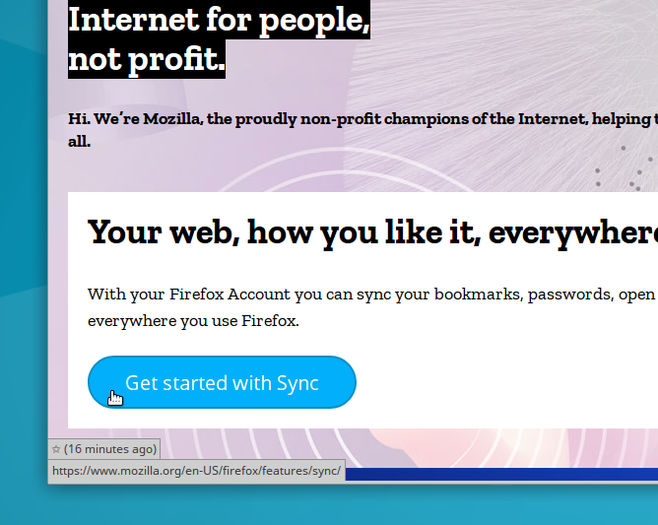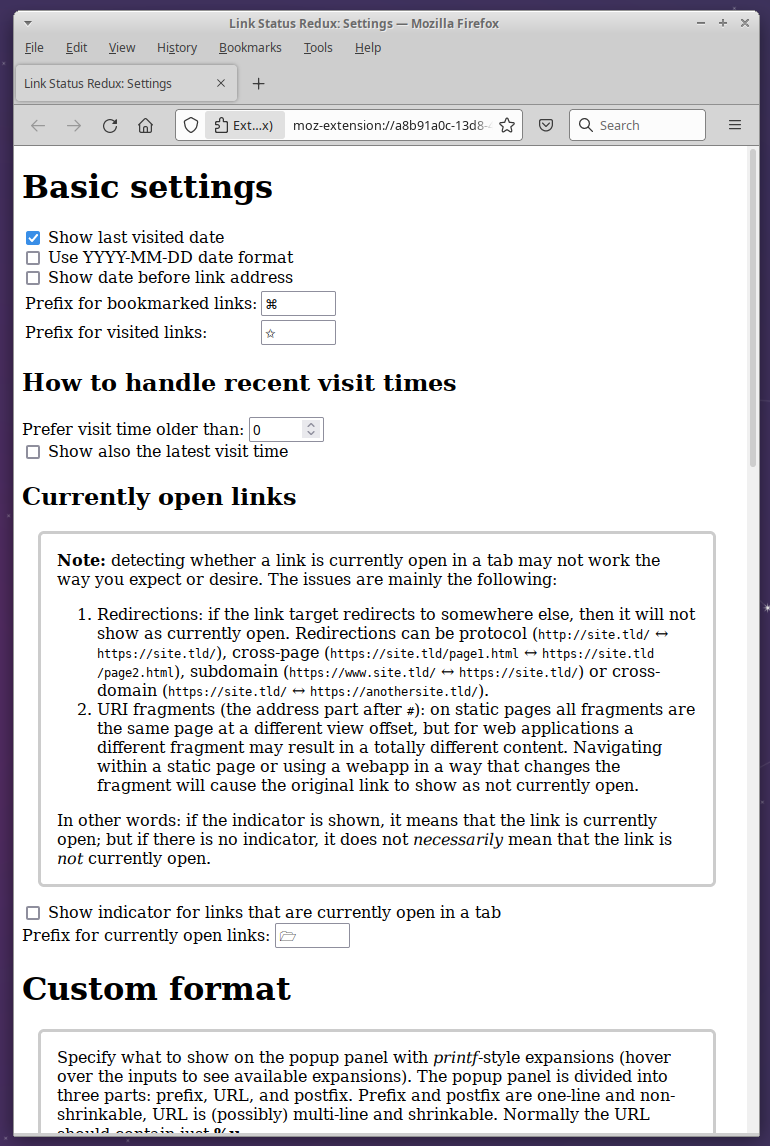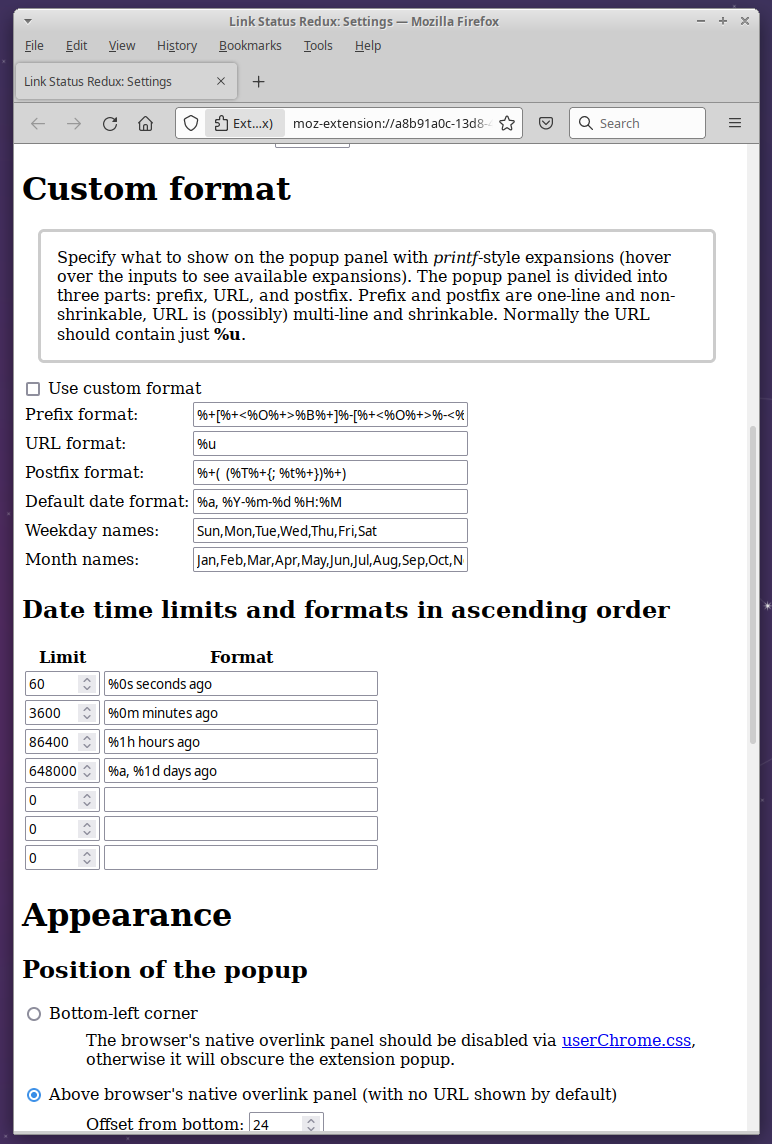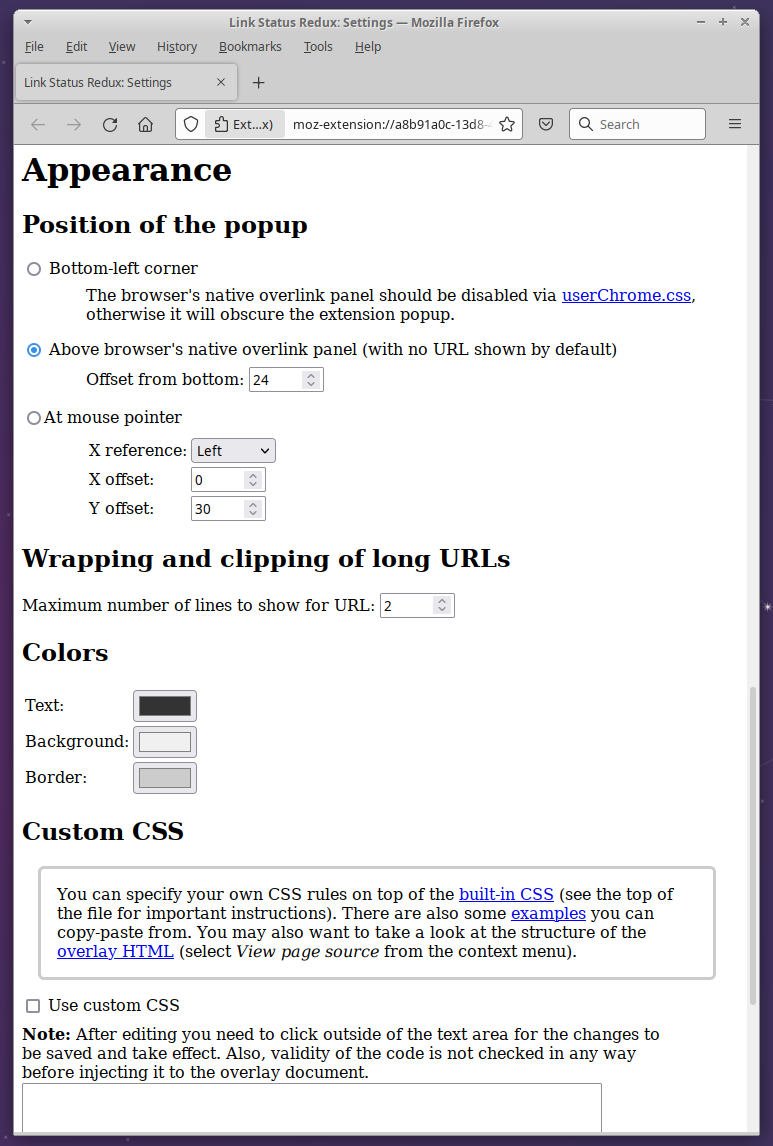Link Status Redux v3.21




Link Status Redux is a Firefox extension that shows an indicator on a status popup panel next to the link address when the mouse cursor is over a link to a page you have bookmarked or visited before, or (disabled by default) if the link is currently open in a browser tab. It can also show the date you last visited the linked page.
The indicator prefixes for visited and bookmarked links are arbitrary, user-configurable text strings. The defaults are a white star (✩, U+2729) for visited links, a place of interest sign (⌘, U+2318) for bookmarked links, and the open folder symbol (🗁, U+1F5C1) for currently open links. Remember a trailing space if you want the indicator separated from the address.
For the displayed visit date, you can choose to prefer visit times that are older than a configurable limit (specified in seconds). This way you can still see the previous visit time even if you happened to accidentally click a visited link. If the limit is non-zero and the link is visited, the latest visit time older than the limit is shown instead. If such a visit time was not found, the very latest time is shown. You can also choose to display both the very latest and the over-the-limit visit times. In this case the latest visit time is always shown and the older visit time is also shown if it a) exists and b) is not equal to the latest visit time.
There are also several appearance customization options. You can:
- Choose where the overlink popup is shown: bottom-left corner (see caveat below), above the browser's native popup, or offset from the mouse pointer (warning: may make page mouseover popups difficult/impossible to see).
- Choose to how many lines a very long link URL is wrapped.
- Choose the colors of the overlink popup.
- Write your own CSS rules to style the overlink popup.
Places to copy-paste UTF-8 symbols from:
- http://www.fileformat.info/info/unicode/block/dingbats/utf8test.htm
- http://www.fileformat.info/info/unicode/block/miscellaneous_symbols/utf8test.htm
- http://www.fileformat.info/info/unicode/block/miscellaneous_technical/utf8test.htm
- http://www.fileformat.info/info/unicode/block/index.htm
Custom formatting allows expert users to more freely specify the text that is shown when hovering the mouse over a link (the "link target text"). The specification is done with printf-style substitutions, and the following are valid for the link target text: %u (link URL), %T (custom-formatted link latest visit time, see below; empty string if not visited), %t (custom-formatted older visit time, if it exists; empty string if it does not exist), %V (the user-defined visited indicator), %B (the user-defined bookmarked indicator), %O (the user-defined currently open indicator), %% (literal % character). In addition, the following conditional blocks can be used: %+( .. %+) (anything between is displayed only when the link is visited), %-( .. %-) (anything between is displayed only when the link is not visited), %+[ .. %+] (anything between is displayed only when the link is bookmarked), %-[ .. %-] (anything between is displayed only when the link is not bookmarked), %+{ .. %+} (anything between is displayed only when the older visit time %t is defined), %-{ .. %-} (anything between is displayed only when the older visit time %t is not defined), %+< .. %+> (anything between is displayed only when the link is currently open), %-< .. %-> (anything between is displayed only when the link is not currently open).
For the visit time, several formats can be defined, which are used when the visit time is more recent than the corresponding time limit. The following substitutions (a subset of those specified by strftime plus the "ago" ones) are valid for visit time formatting: %c (date and time in locale's preferred format), %x (date in locale's preferred format), %X (time in locale's preferred format), %Y (4-digit year), %y (2-digit year 00..99), %m (zero-padded month 01..12), %b (month name from user-defined list), %a (weekday name from user-defined list), %d (zero-padded day of month 01..31), %e (day of month 1..31), %H (zero-padded hour 00..23), %k (hour 0..23), %I (zero-padded hour 01..12), %l (hour 1..12), %p (AM/PM), %P (am/pm), %z (timezone offset in the form -HHMM or +HHMM), %M (zero-padded minute 00..59), %S (zero-padded second (00..60), %Ns (# seconds ago with N decimals), %Nm (# minutes ago with N decimals), %Nh (# hours ago with N decimals), %Nd (# days ago with N decimals), %Nw (# weeks ago with N decimals), %NM (# months ago with N decimals), %Ny (# years ago with N decimals), %% (literal % character).